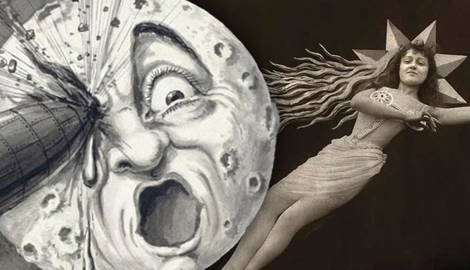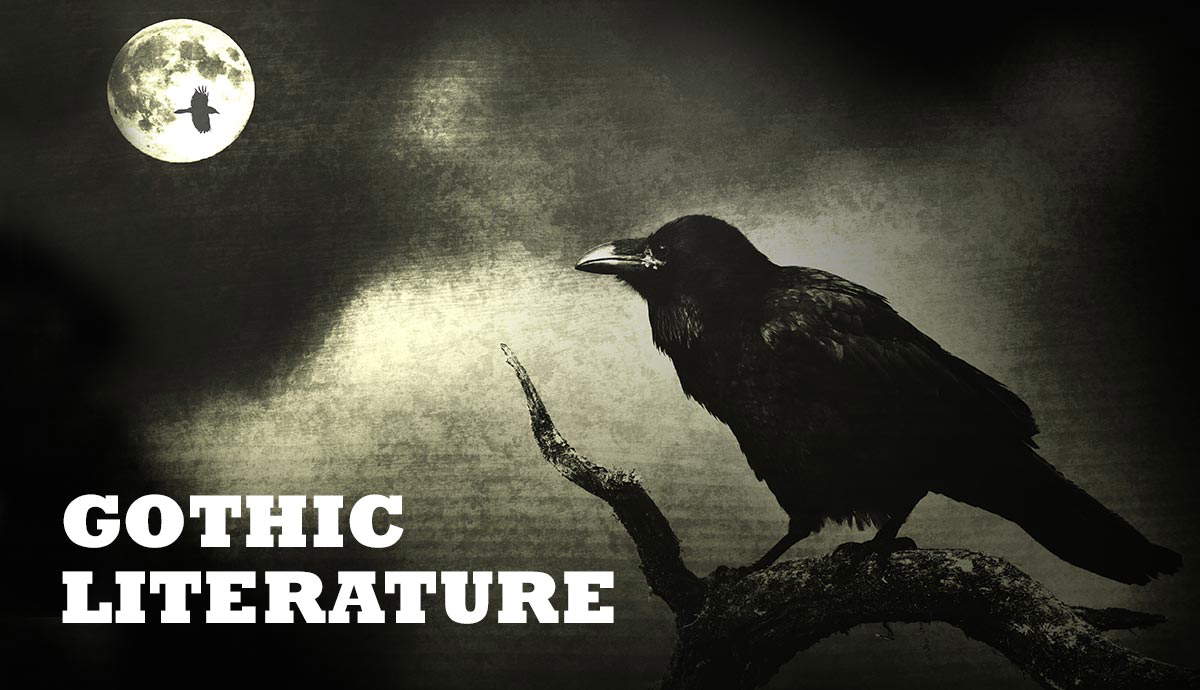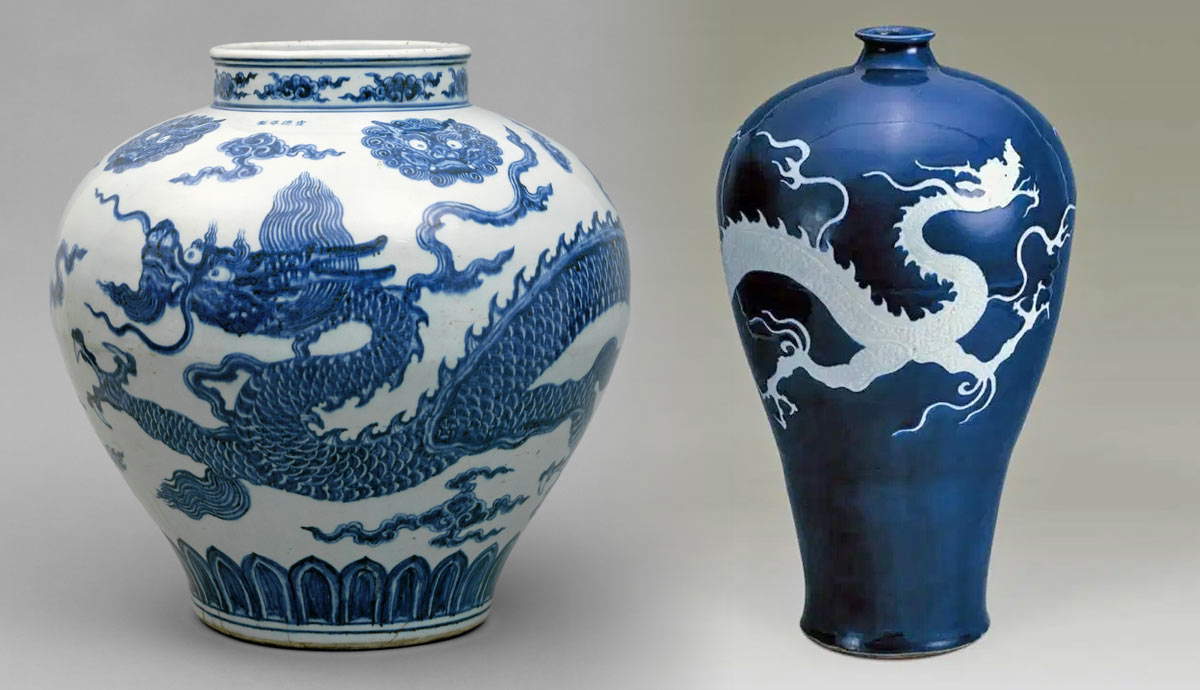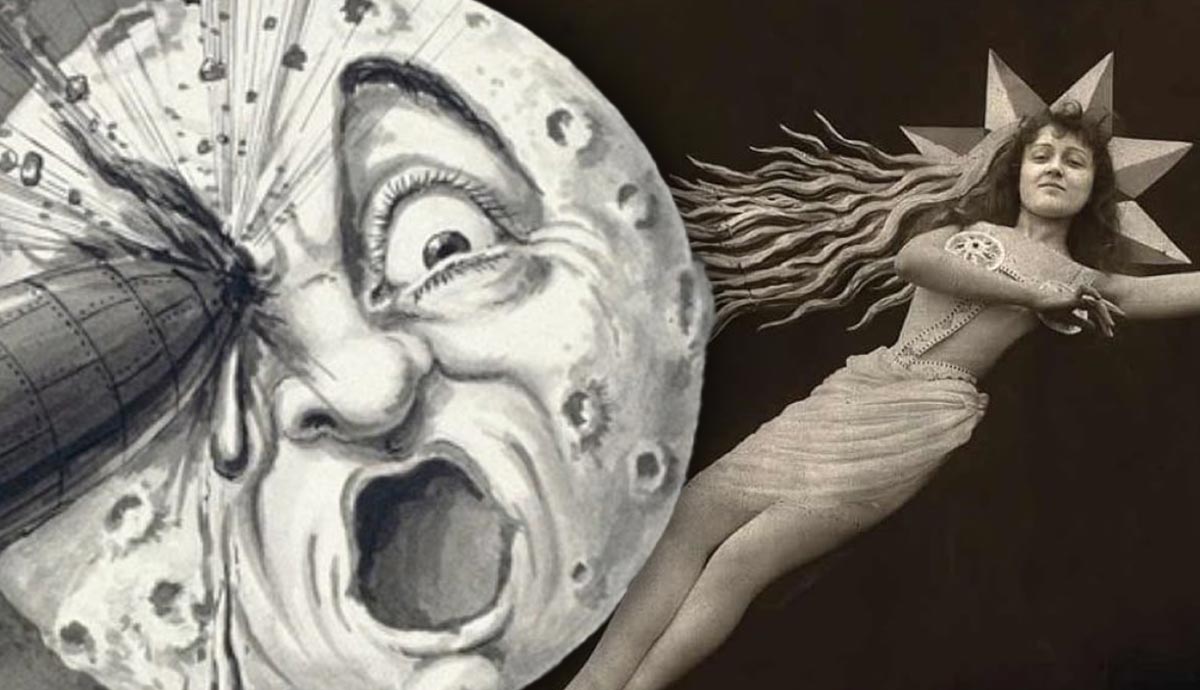
In the earliest days of cinema, when pictures moving at all was still shocking, one visionary saw the fantastical possibilities of this exciting new technology. Artist, magician, inventor, and director Georges Méliès created worlds filled with magic and adventure that revolutionized filmmaking when it was just beginning. He remains one of the most creative minds in the history of movies.
Georges Méliès: A Magician of the Movies
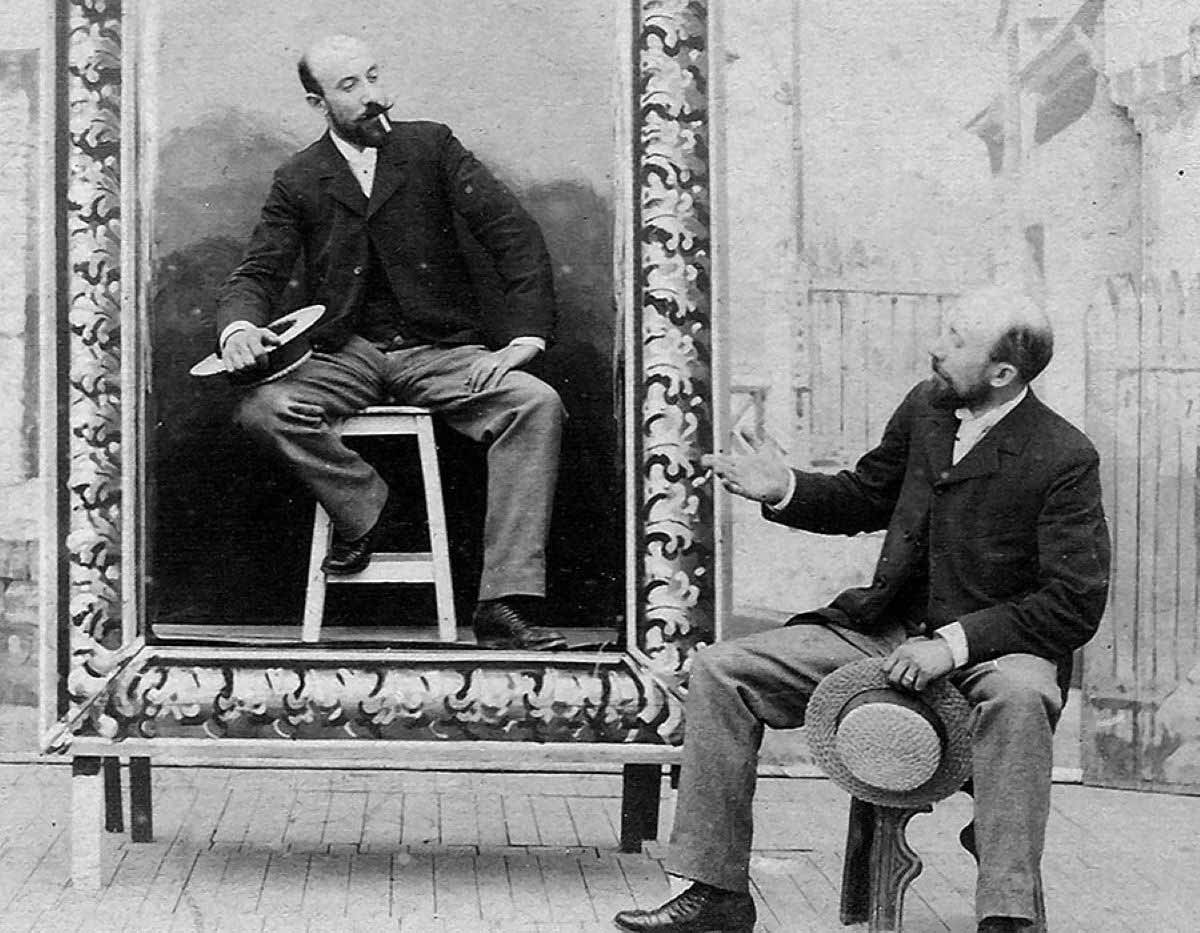
On the 28th of December in 1895 in Paris, guests looked in awe as moving pictures were projected at the Salon Indien du Grand Café. Scenes of workers leaving factories, gentlemen playing cards, and trains arriving at stations stun those who’d never seen anything quite like this before. Among those marveling at the Lumière Cinématographe for the first time, was the illusionist, artist, inventor, and theater director Georges Méliès.
Georges Méliès was born in 1861 to a family of luxury shoe-makers. Since childhood, Méliès had a penchant for the arts, drawing monsters, caricatures and fantastical landscapes all over his notebooks.
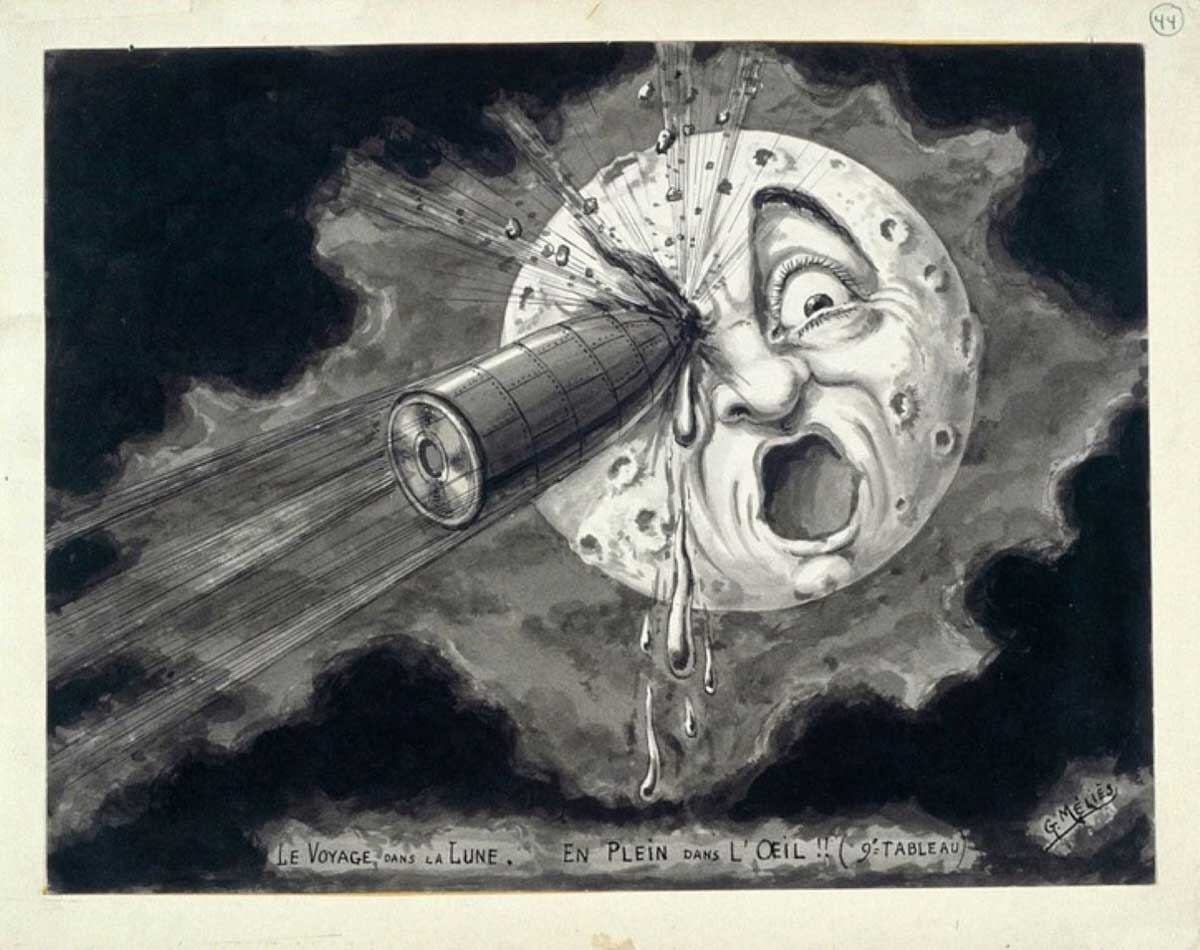
Despite his father’s disapproval, Méliès went on to become a stage magician. In the theater, Méliès put his artistic skill and the mechanic knowledge from working at the family factory into developing his own tricks and illusions. By the time the Lumières invited him to their Cinématographe projection in 1895, Méliès was a successful illusionist and longtime director of the Théâtre Robert-Houdin.
Méliès was immediately spellbound by motion pictures. He offered to buy the Cinématographe that same night. Once his offer was refused, he found another projector to own instead—Robert W. Paul’s Animatograph. Méliès reverse-engineered the Animatograph so that he could use it as a camera as well, and immediately began to shoot movies. By late 1896, he was showing them at the Robert-Houdin. He also established his filmmaking company Star Film and built his first film studio in Montreuil-sous-Bois.
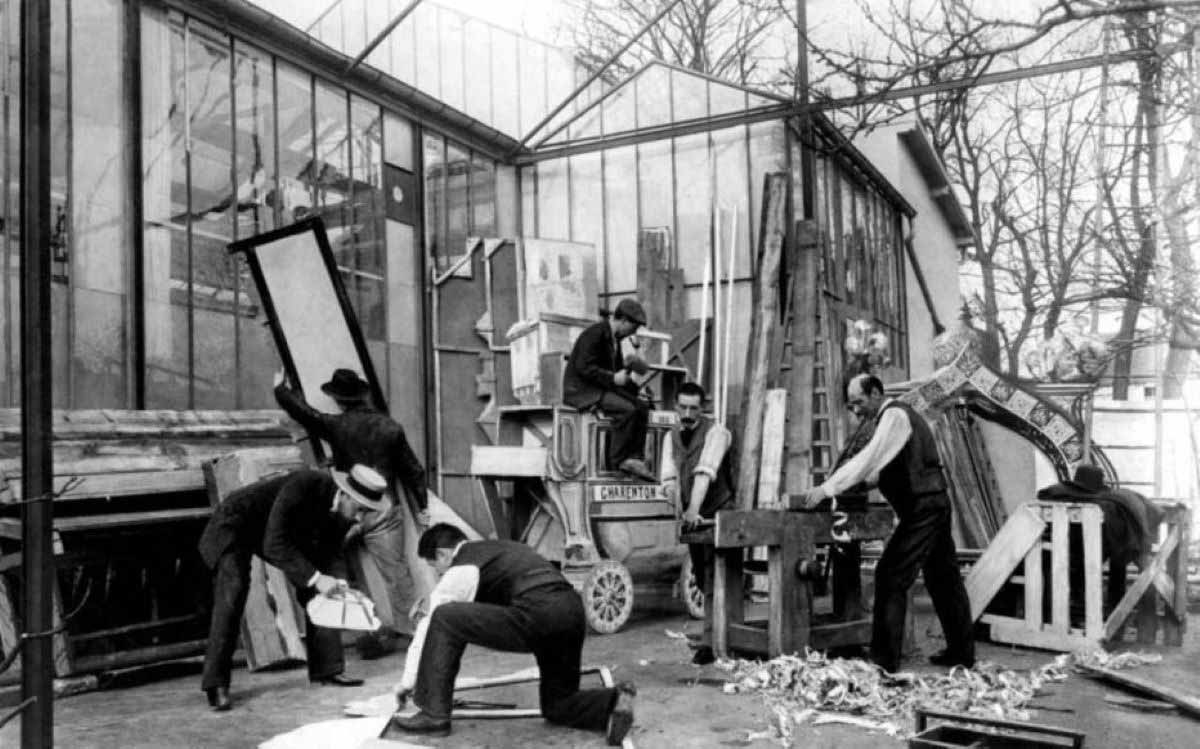
The studio was made entirely of glass in order to utilize daylight. It was the first of its kind. There, Méliès and his employees shot films and built sets, costumes, and props. They also edited and hand-tinted every one of his hundreds of movies. Méliès would go on to produce over 500 films between 1896 and 1914. Eventually, the cutthroat business of the film industry and the Great War brought Méliès career to a grinding halt. But before that, in his own glass palace, the whole world seemed to be within reach.
Méliès’ Happy Accident
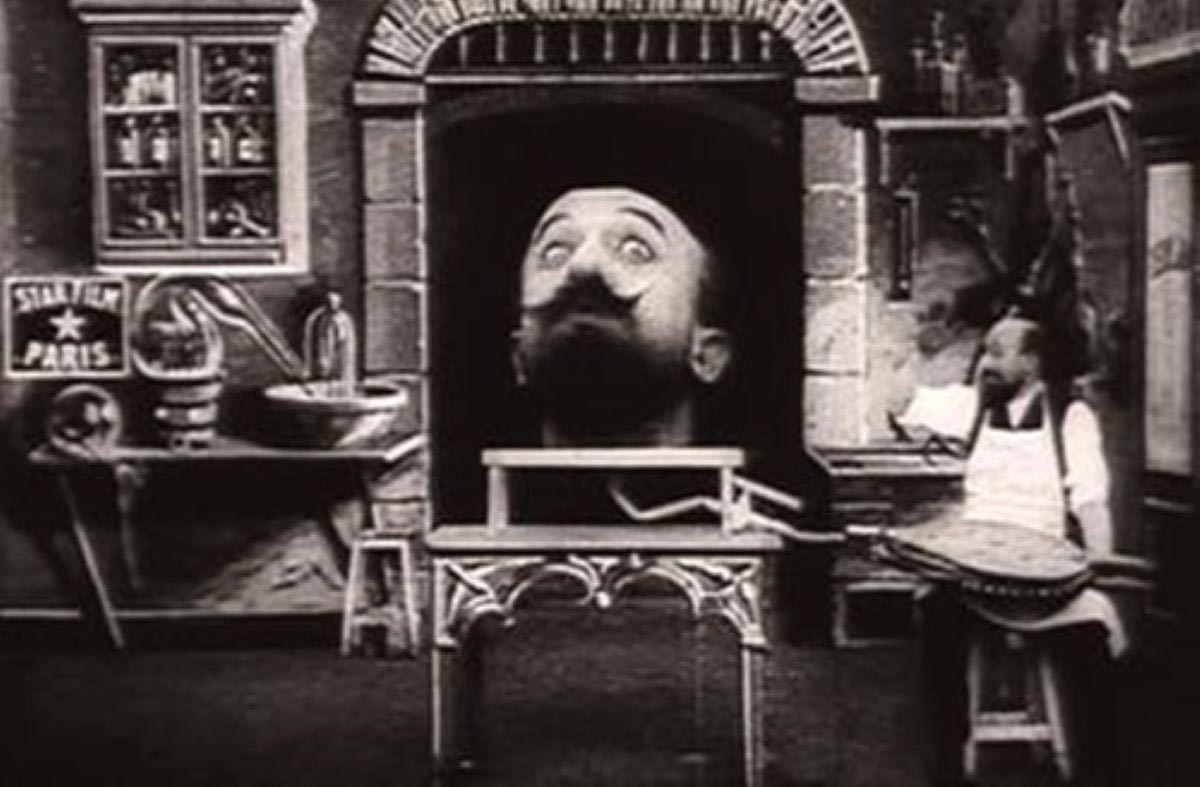
One day, according to his memoirs, Méliès was recording at the Place de L’Ópera when his camera jammed for a moment. Méliès realized that the camera had stopped recording, and by the time it was fixed, the whole street scene had changed. The effect was striking—faster than the blink of an eye, women turned into men, children turned into horses, and a carriage turned into a hearse. The illusionary nature of film was revealed.
A stop trick happens when only one key element of a scene changes from one cut to the next, creating the illusion of transformation or disappearance. The 1895 film The Execution of Saint Mary used a rudimentary effect similar to it. Méliès’ earliest reproduction of it can be seen in the 1896 Vanishing Lady. Several scholars question whether Méliès’ happy accident really happened or if he saw and reverse-engineered Saint Mary’s trick as he did with the film camera. Whatever the case, Méliès would perfect the stop trick in order to manipulate time, space, and the very fabric of reality.
The Grandmaster of Special Effects
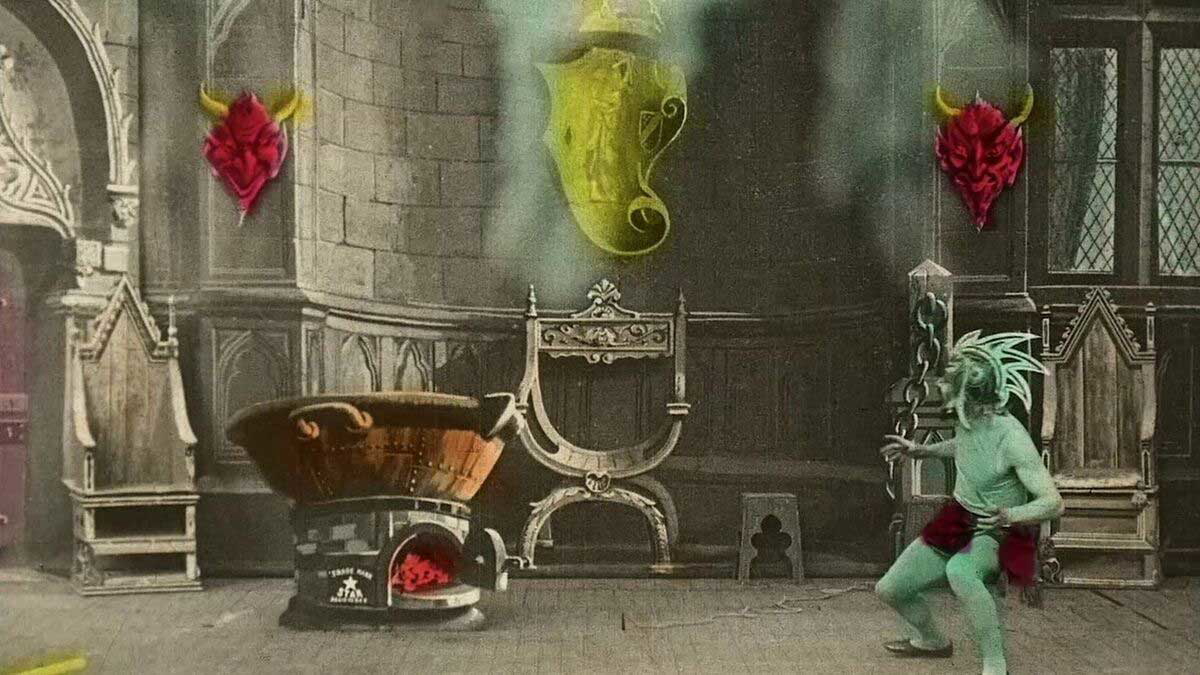
Méliès pioneered several motion picture editing techniques and special effects that are still used today, adapting photographic techniques to the moving pictures, experimenting, and creating his own effects and in-camera illusions. He adapted photography’s multiple exposure effects when different images are superimposed on one another, often with a phantasmagoric effect, by exposing the same film multiple times. The same happened with matting and split screening, techniques where the camera lens is partially obscured so that the images recorded in the unobstructed areas appear together in the same frame. Méliès developed time-lapses and dissolves in his films, and made ample use of matte painting, miniatures, and prosthetics to create anything from magic tricks, illusions of depth and space, editing effects, and intricate sets.
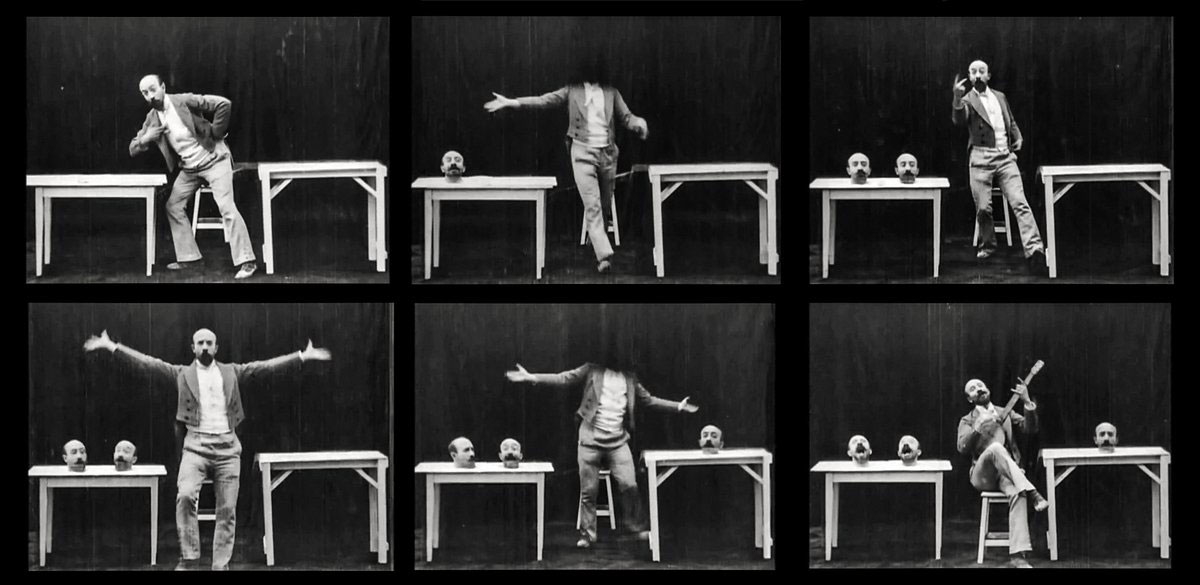
Many of his films were distributed in color, each copy was painstakingly hand-painted, adding an effect that would take around five decades to reach mainstream cinema. One of Méliès’ most famous trick films, The Four Troublesome Heads (1898) features the use of masking and prosthetic work as Méliès himself pulls off his head four times as they all argue and sing with each other. Similar head-popping tricks can be seen in The Melomaniac (1903). They reveal a superb control of various effects and edits that would seem complex even today, with a film exposed at least seven times, seamlessly blending several visual elements.
Méliès’ Voyages, Fairies and Worlds Within Reach
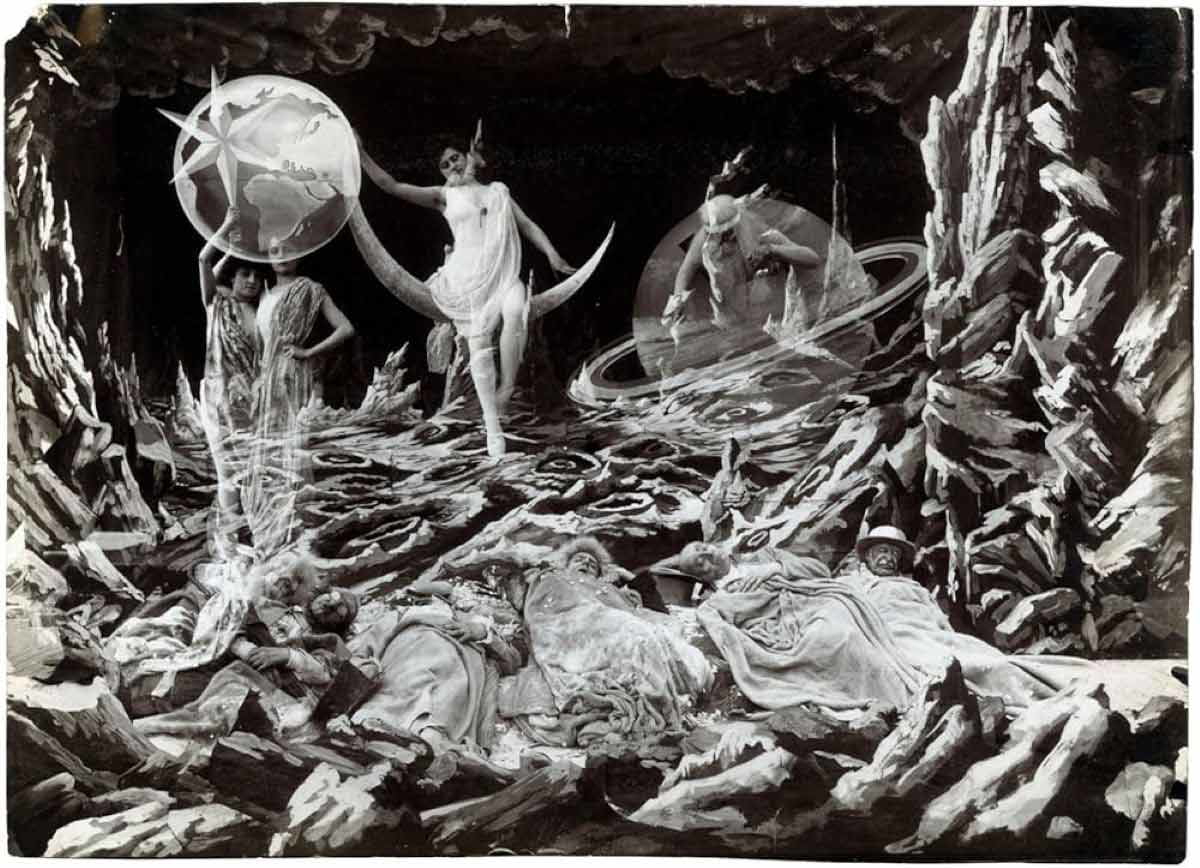
When we think of Georges Méliès, certain images come to mind—vedettes hanging from the sky as stars, trains being swallowed by the sun, or a moon with a bullet in its eye. Georges Méliès’ wide catalog includes comedies, dramas, trick films, historical epics, and other genres. Méliès directed the first political film in history—and the first film that was censored—The Dreyfus Affair (1899). He also directed one of the first horror movies Cleopatra’s Tomb (1899) and the ambitious 10-minute-long Joan of Arc (1900). Méliès’ career as a director was certainly diverse, but it was his fantasy films that showed the world that cinema was more than moving pictures—it was a tool to make dreams come true.
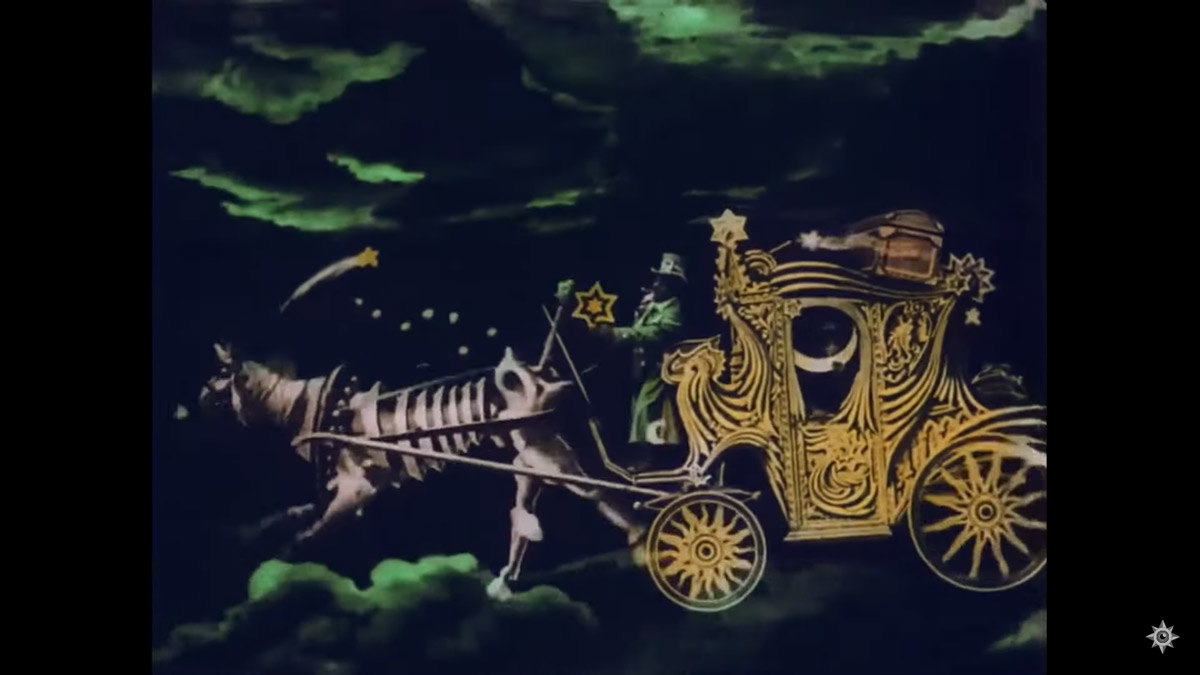
The 1899 Cinderella was the first movie in history to use storyboards and the first of many Méliès fairy tales—the most famous of them being The Kingdom of the Fairies (1903). Kingdom of the Fairies is among Méliès best films. While following the rescue of Princess Azurine, who was kidnapped by a witch, we cruise through several lavishly created magic realms and battles and some of Méliès’ most complex action sequences. Diabolical tales were another Méliès staple. This can be seen in The Infernal Palace (1896), The Devil in a Convent (1899), and the gleefully sadistic spectacle of The Merry Frolics of Satan (1906).
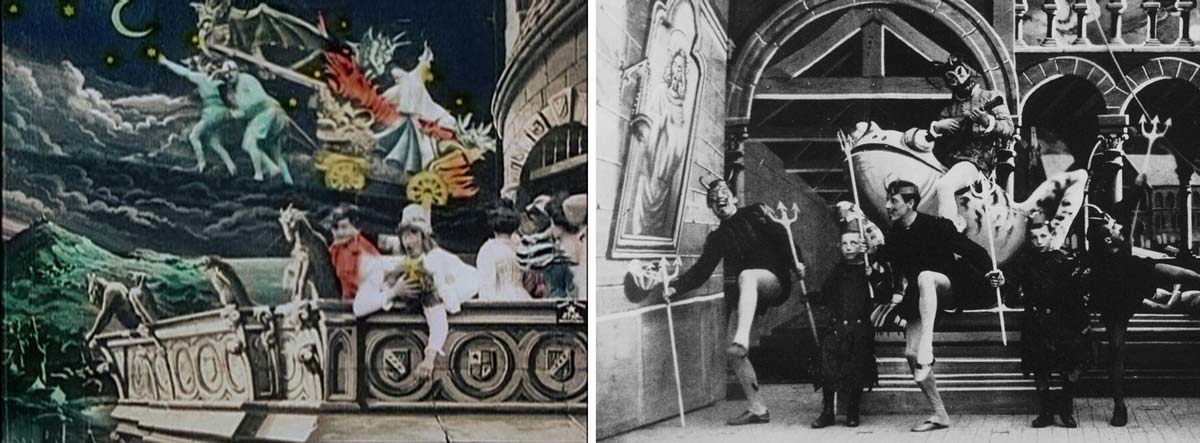
The scene of a moon getting hit in the eye with a projectile is one of the most iconic images in cinema history. It is a highlight from Méliès’ most famous film called A Trip to the Moon (1902). Considered the first science fiction film in history, A Trip to the Moon is a whimsical tale of scientists traveling to the moon from a cannon blast. It boasts stunning sets and effects like the snowfall in space, giant mushroom forests, the moon aliens, and the rapid cut of the capsule falling back down to the bottom of the sea.
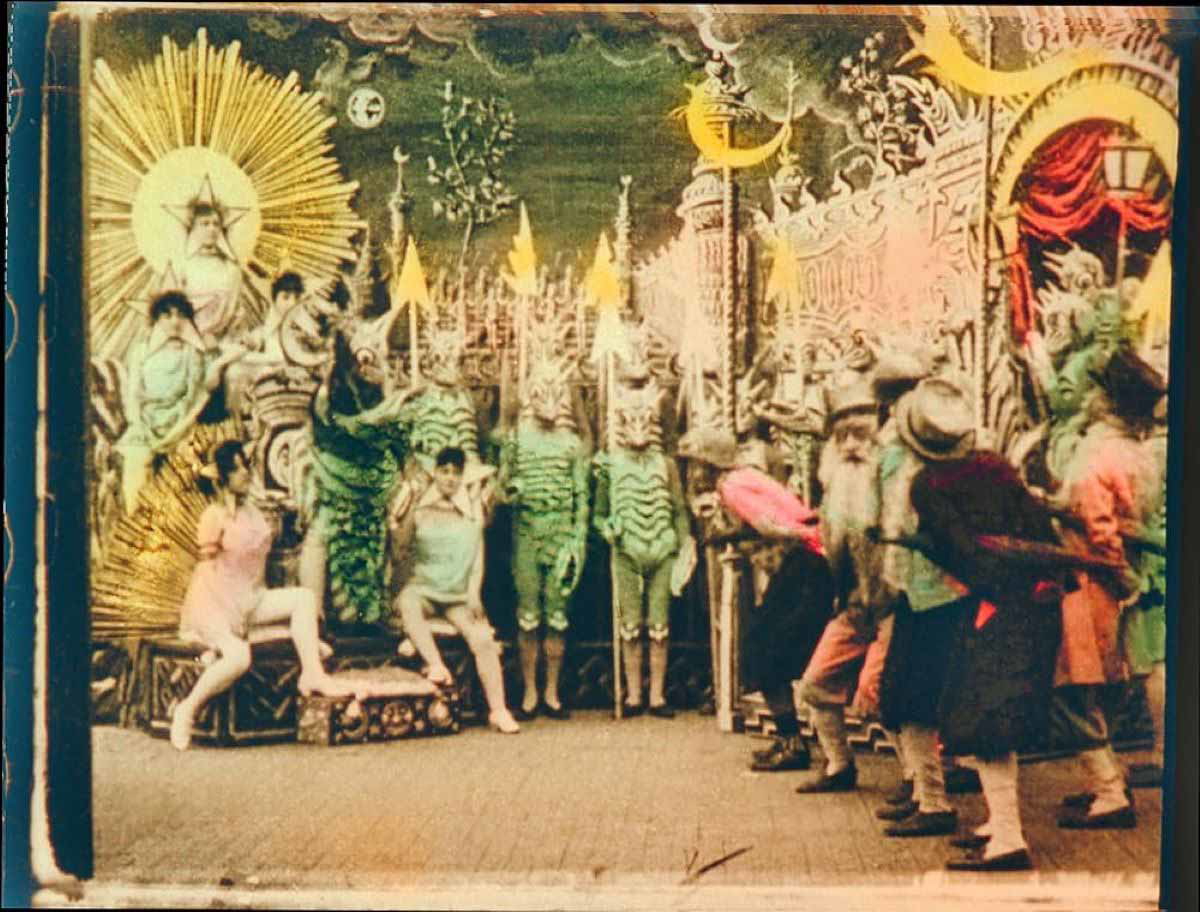
The quasi-sequel Journey through the Impossible (1904) similarly marries fantasy and science fiction, as we follow members of the Society of Impossible Geography on a mission to get to the Sun. Here, we accompany a flying train traipsing the Alps, space, and the bottom of the sea.

Méliès’ last grand production, The Conquest of the Pole (1912) is his longest one with a 30-minute runtime. Parodying the recent expeditions to the Arctic, The Conquest of the Pole is a visually stunning artistic voyage. Highlights include an aircraft race and a giant yeti—a fitting last hurrah to Méliès formidable style.
Theatricality and Cinematography of Georges Méliès
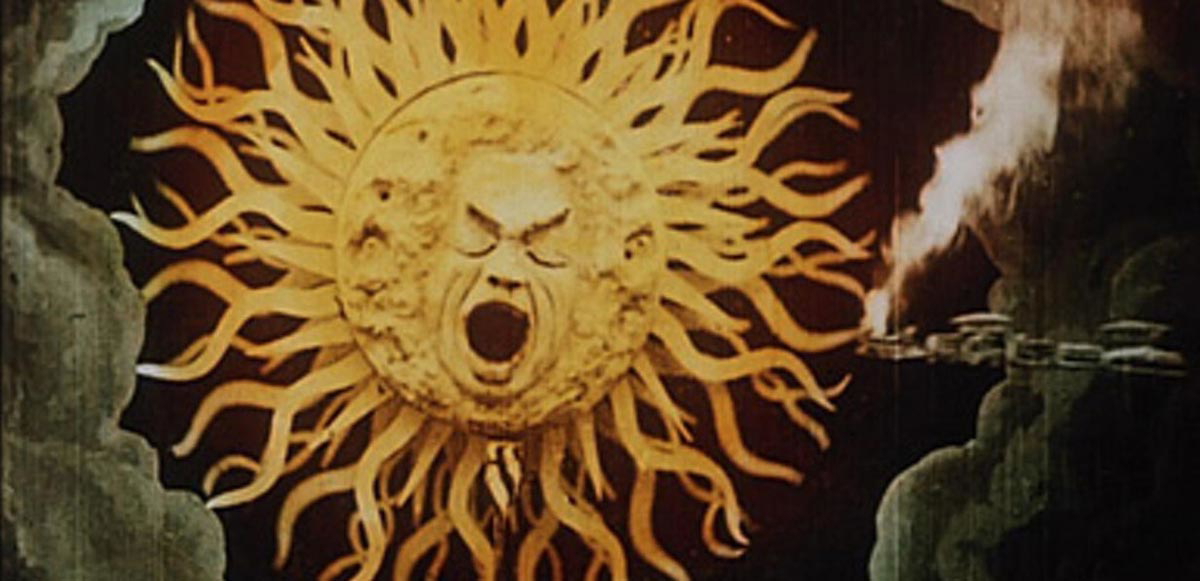
Méliès theatrical background had an undeniable influence on his films. Méliès famously maintained his camera static in his career, more or less at a proscenium angle so that it seemed like a view from the best seat in the theater. This certainly differs from the realistic, diegetic narrative film language that became mainstream. The aesthetic appeal of his sets and vaudeville tone of acting was also cleverly uplifted by meticulous, boundary-pushing editing. Méliès owes a particular lot to the féeries, a type of play that was popular after the French Revolution which combined melodrama, comedy, ballet, acrobatics, special effects, and richly decorated stages.
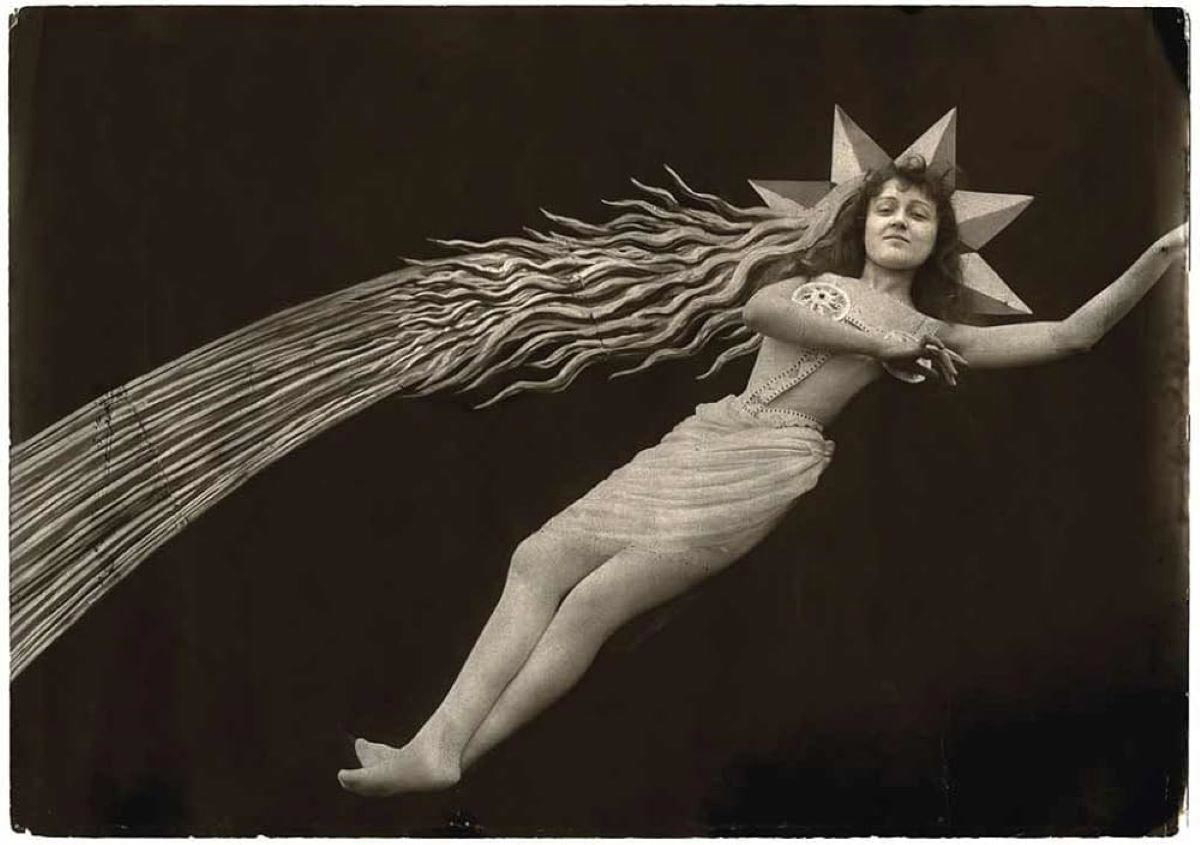
Méliès, whose narratives were built around his tricks, certainly helped break ground for fictional narrative cinema alongside pioneers like Alice Guy-Blaché. Decades before film movements started flourishing, at a time when people were still marveling at footage of trains, Méliès was building medieval castles, anthropomorphic celestial bodies, aliens, monsters, fairy kingdoms, underwater realms, haunted palaces, and infernal landscapes.
Méliès’ Downturn
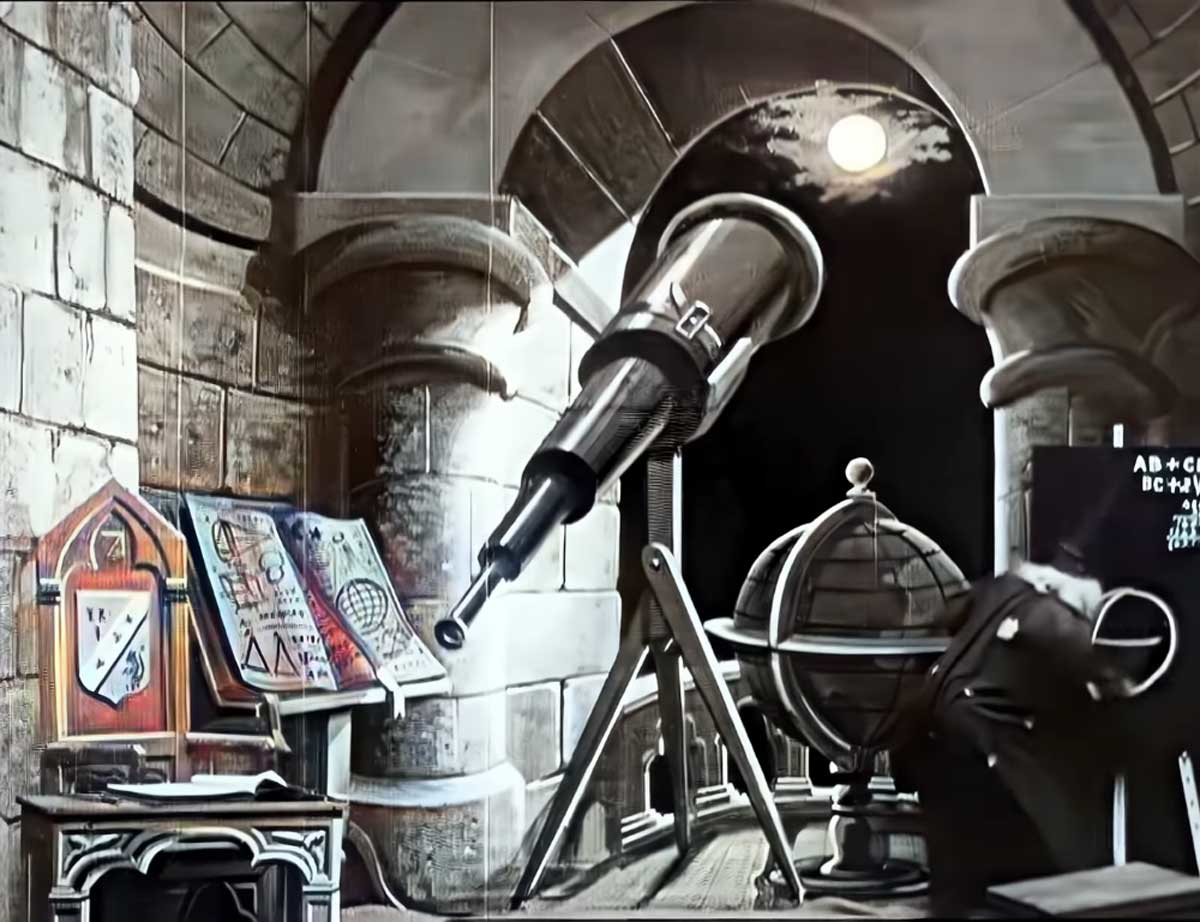
As the 1910s rolled around and mainstream cinema taste grew farther from féeries and voyages, Méliès films became less and less successful. Several bad business deals, mismanagement, and the rampant theft of his films lost Star Film practically all its money. World War I spelled the end of it. Méliès’ studios at Montreuil were seized and his film prints were confiscated by the army and melted for celluloid in order to make shoes.
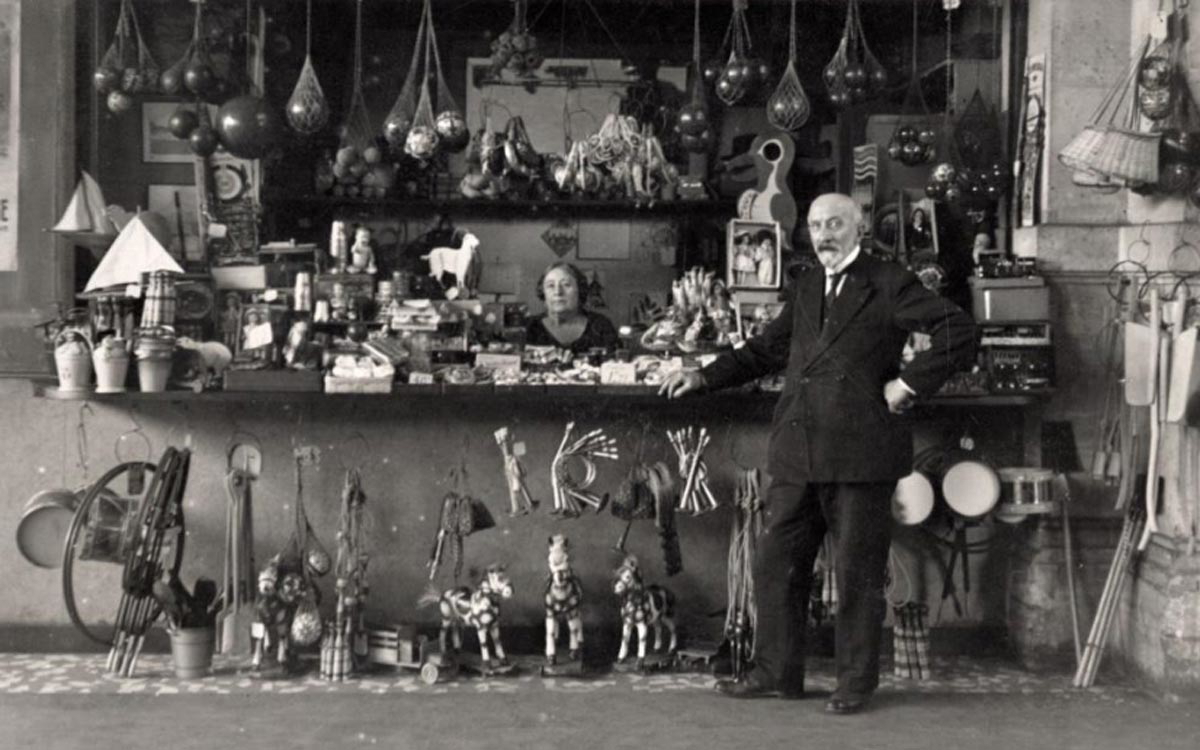
In a fit of despair, Méliès himself ended up burning all of his negatives, costumes, and sets. To this day, more than 300 of his movies remain lost. Méliès was forced to sell Théatre Robert-Houdin in 1923, which was demolished to make way for Boulevard Haussman. He would go on to sell candy and toys at a small store at Gare Montparnasse for the next decade, fading into obscurity.
The Rediscovery of Georges Méliès
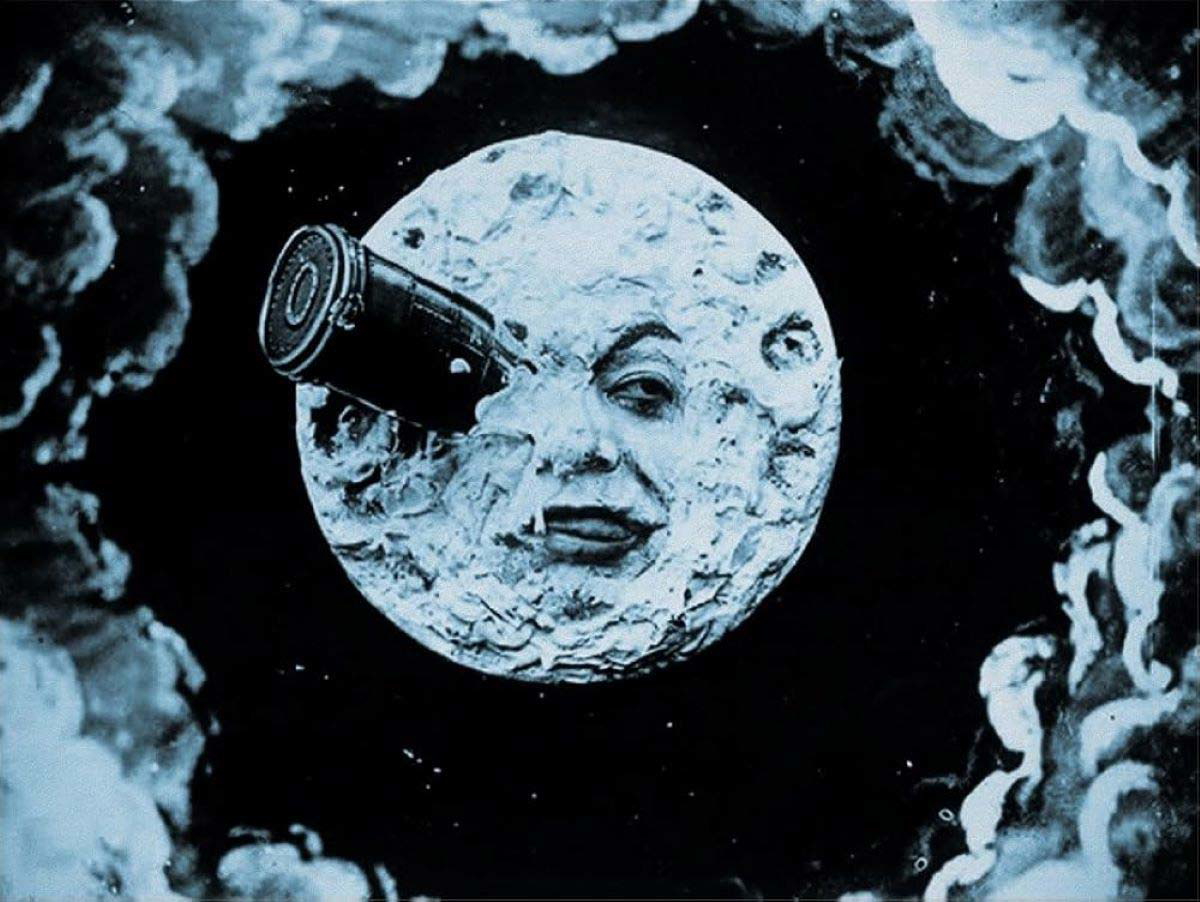
Méliès’ life was not about to end in tragedy, however. In the late 1920s, filmmakers and researchers found out Georges Méliès was still alive and sought him out. There was a resurgence in interest in his art which found a new, younger audience. In 1929, a gala was organized in his honor, where five of his films, including A Trip to the Moon, were publicly shown for the first time in over a decade. Méliès directed a short film for this occasion, where he stepped out from the very screen to greet his audience once more. Méliès recalled the night as one of the most luminous of his life.
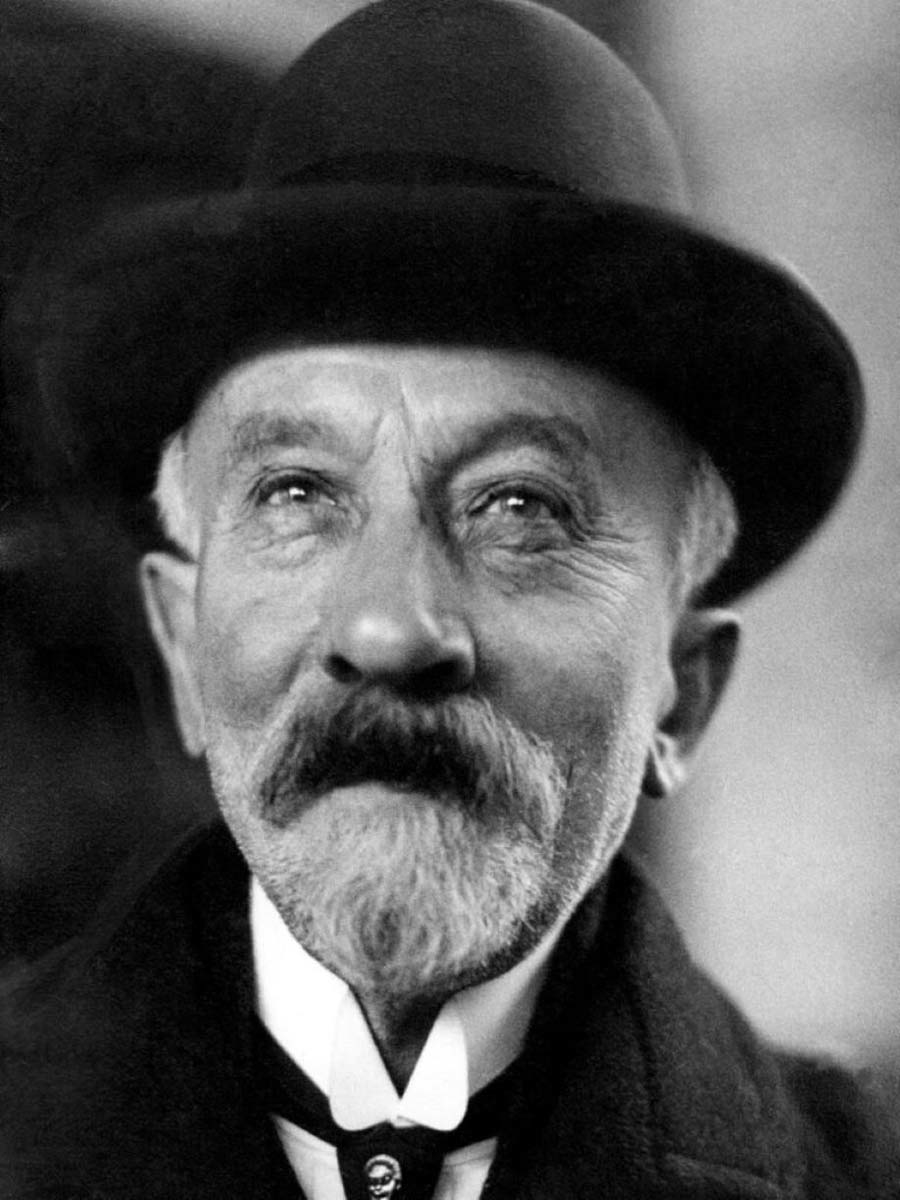
In 1931 he was made Chevalier de la Legion d’Houneur, the highest order of merit in France, presented to him by Louis Lumière.
He would move to the film industry’s retirement home in Orlys. Though he never directed again, he wrote about movies, gave interviews, illustrated and advised young filmmakers until his death, in 1938.
For the next century, Méliès’ life’s work and his contributions to cinema would be revisited, rediscovered, catalogued, and referenced time and again. More than 200 of his films have been recovered and made publicly available, where they’ll remain bringing magic to the screens of new generations to come.
